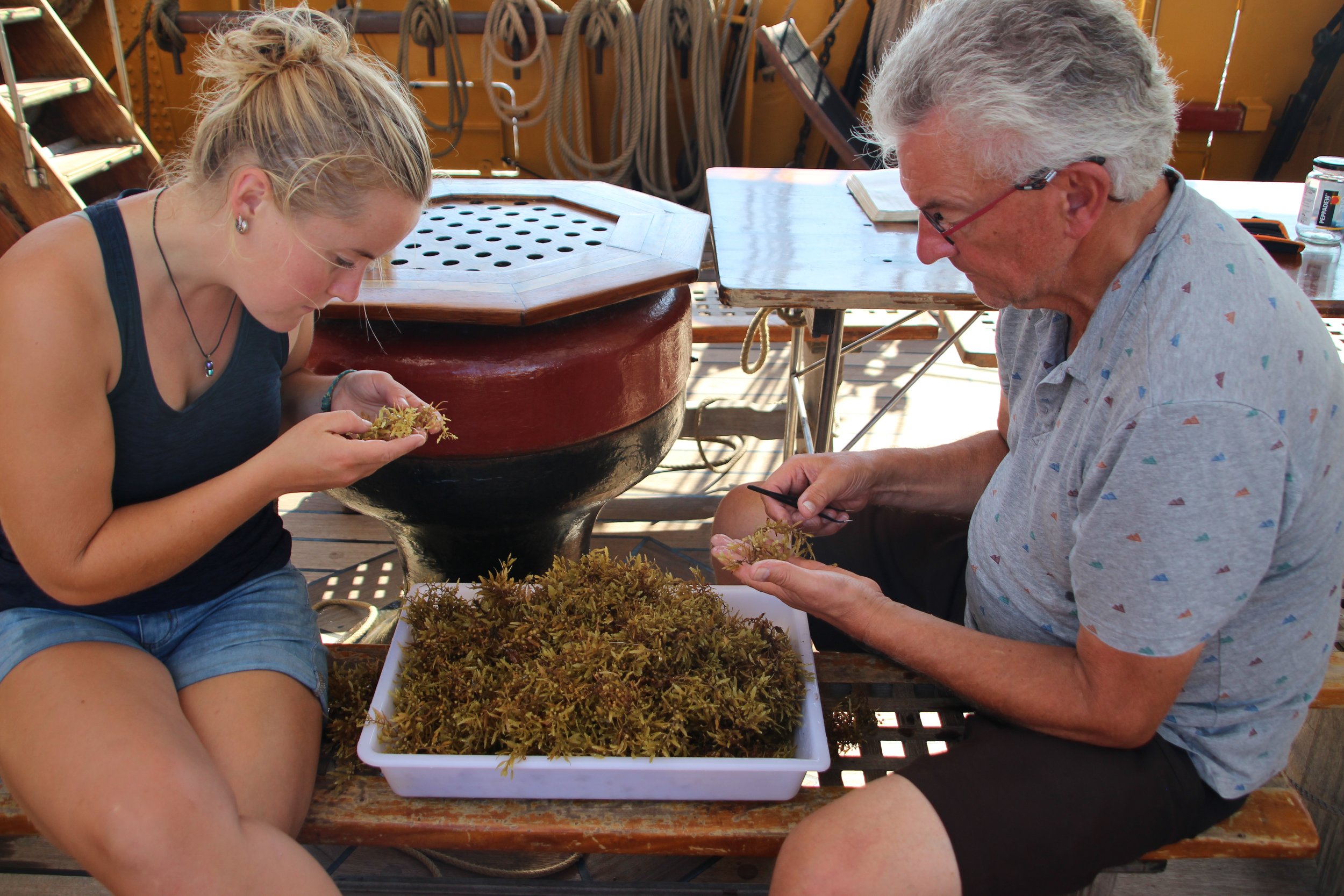Onboard the ship I have given talks about plastic pollution and the effects to the ocean environment and the voyage crew have showed interest in the topic and have also been very much involved in the research project. They help launch and recover the manta trawl and they help with visually analysing the samples for microplastic particles.
After a week sailing the tropical North Atlantic we arrived in the waters of Cape Verde and the wind and sea were once again calm enough to launch the manta trawl. The results proved hopeful for the environment as we discovered less plastic in the samples collected at the area.
The distribution and accumulation of ocean plastics is strongly influenced by currents and wind patterns. The Cape Verde is placed just at the edge of the North Equatorial Current which is part of the North Atlantic Gyre. An ocean gyre is a system of ocean currents moving in a circular pattern. The gyre’s circular motion attracts particularly small plastic particles transporting them to the centre of the gyre. So the waste from the coast of the lower part of Europe and top part of Africa is transported via the currents and wind patterns to the North Atlantic Gyre where it remains. There are 5 major gyres on Earth. These are the North Atlantic, the South Atlantic, the Indian, the North Pacific, and the South Pacific.








